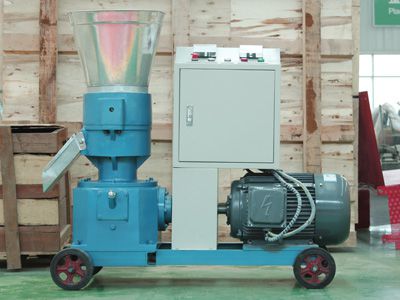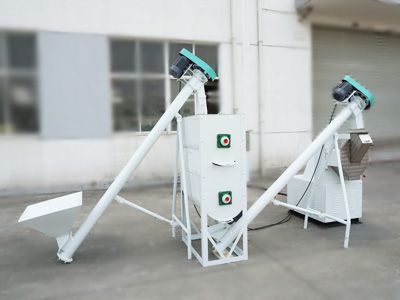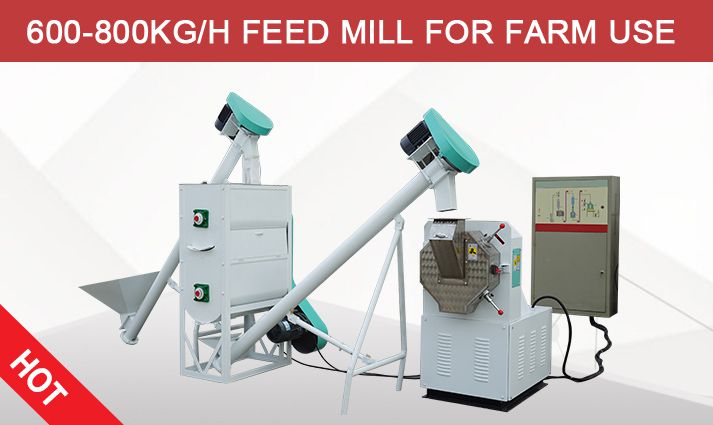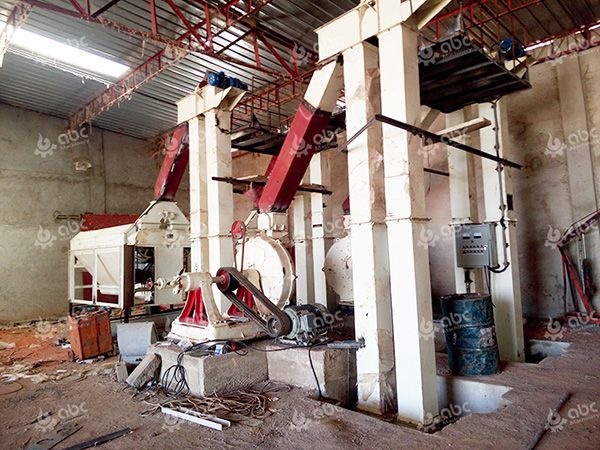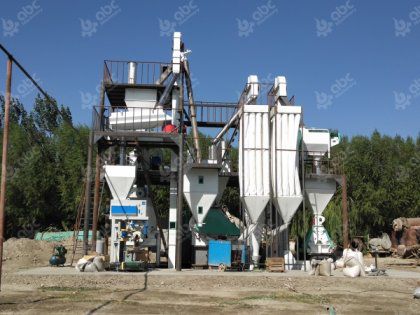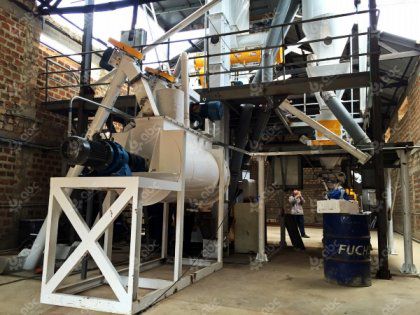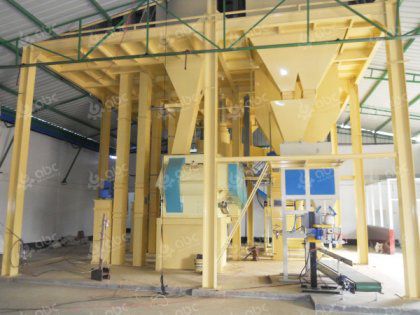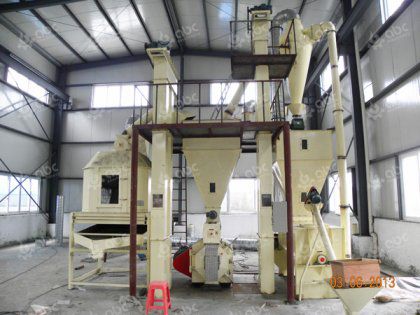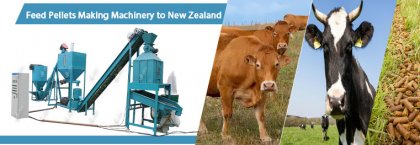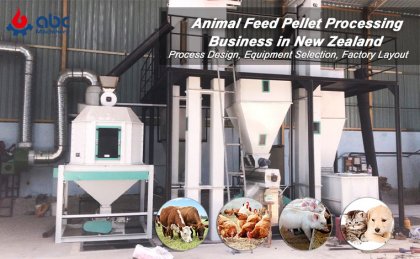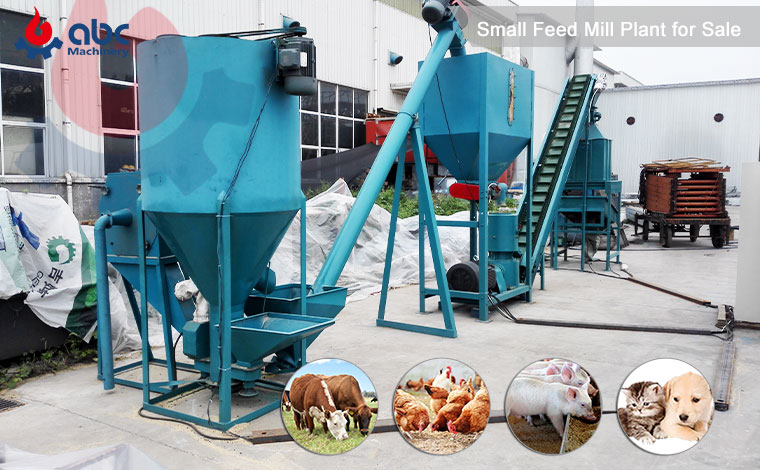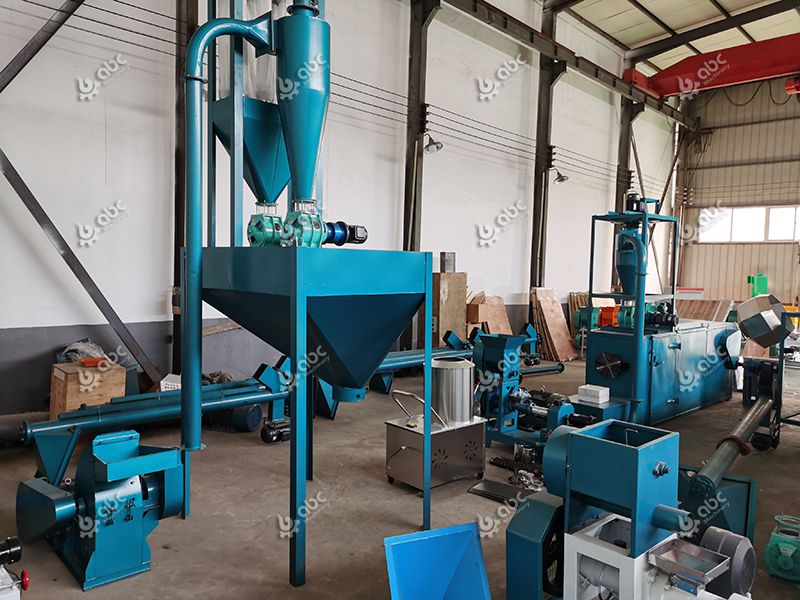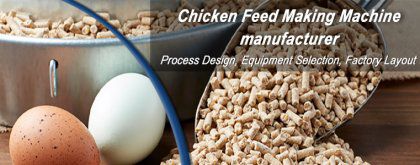Chicken feed pellets are one of the cost-efficient feed sources and the most preferred chicken feeds for the chickens. Chicken feed pellet production is growing globally due to the more demand for nutritional feed, which also boost business investment in poultry feed pellet production industry. (Read More: Poultry Feed Manufacturing Plant Cost >>)
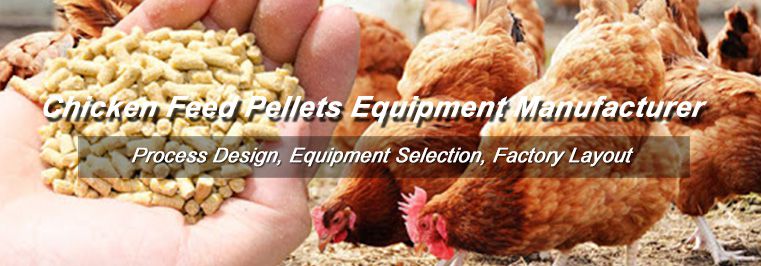
Chicken Feed Pellets
However, buying chicken feed pellets across the counter may be very expensive for the chicken farmer. So, how to save money on chicken feed without compromising on the nutritions. How about make your own chicken feed pellets by your own? It is absolutely possible and practical to make the chicken feed pellets at home, which is great opportunity for poultry farmers looking to start a chicken feed business.
How to Make Chicken Feed Pellets?
It is possible and quite easy to make your own chicken feed pellets on your farm or homestead. Below illuminates the chicken feed formula, chicken feed raw materials, chicken feed pellet making machine and poultry/chicken feed manufacturing process for both the layers and the broilers. Good pellets mean better chicken and hence better performance. (Related Post: How to Make Cattle Feed Pellets >>)
- Ideal Chicken Feed Formula
The ideal chicken feed formula is: lysine 7%(min), Crude protein 16.5%(min), Methionine 2% (min), crude fat 3%(min), cruder fiber 5%(max), calcium 3.5%(min). You however do not have to make these measurements as long as the given ingredients are balanced.
- Top Raw Materials for Homemade Chicken Feed Pellets
There are a variety of raw materials that can be the good raw materials to make chicken feed pellets, including barley, wheat, corn, peas, and oats, alfalfa pellets for the grind/whole portion, and cultured yeast, fish meal, kelp, flax seed, crab meal, salt, and aragonite for the premix. The raw materials are readily available especially during the harvest season and can be obtained at an affordable pricing.
- Chicken Feed Pellet Making Machines
Feed pellet making machine is the core machinery for chicken feed pellet making. It can be divided into two types: Flat Die Pellet Mill and Ring DIe Pellet Mill according to its structure and design. These two animal feed pellet making machines have many differences in capacity, price, working principles and more. In addition to a animal feed pellet mill machine you may also require other auxiliary equipment, such as a feed grinder to grind the corn and the peas. If you are feeding very few chickens you will not require a feed grinder. If you don’t know how to choose the right equipment for your poultry or birds, please contact us for detailed consultancies!
Professional Feed Pellet Making Machine Manufacturer and Supplier - ABC Machinery
ABC Machinery is a large animal feed processing equipment manufacturer in China. As a comprehensive enterprise, we have complete system of design, research and development, manufacturing and sales. At the same time, we have built a professional installation and commissioning team, which is responsible for the installation and debugging of overseas animal feed pellet plant projects. Our feed pellet machines are exported to many countries, and we also have setup the complete animal feed pellet plant projects in many countries, including Philippines, Uzbekstan, Lithuania, Nigeria, Tanzania, Ghana, Zambia, Kenya, Mali, Russia, Fiji, etc. If you are planning to make your own animal feed pellets or start animal feed pellet making business, we can offer customized plan, from equipment selection, installation and commissioning. Most importantly, choosing us, you can save money and time so as to gain the profits quickly.
4 Steps to Make Chicken Feed Pellets
When the required chicken feed machine and raw materiasl are ready, you can start to make the chicken feed pellets, as listed follow.

Chicken Feed Pellet Making Process
- Step 1: Prepare a Nutritious Premix for Chicken Feed
The premix is later on added to the whole grains. The premix can be made beforehand and stored then used when you is making the feed. The premix is made by mixing the powdery ingredients; cultured yeast, fish meal, kelp, flax seed, crab meal, salt and aragonite. Measure the ingredients in sufficient amounts. After mixing these ingredients, you can store for later use or use all of the premix at once in making the feed.
- Step 2: Crush Whole Grains
the corn and the peas. Use a stone if it’s not a large amount. However, a feed grinder is highly recommended for finer results. The crushed corn and peas is then added to the premix. The smaller whole grains can be added whole; barley, wheat, oats and alfalfa pellets.
- Step 3: Mix Premix and Crushed Grains
After adding the crushed and smaller whole grains to the premix, you then mix them thoroughly by hand, or use a feed mixer.
- Step 4: Press Raw Materials into Pellets by Pellet Mill Machine
Then the mixed materials are fed into the feed pellet pellet maker and pressed into pellets. For later use, you have to store the feed pellets in a covered bin. It is good for a few days only; not for so long.
With the above information, you are able to make quality pellet feeds for your chicken. The home-made chicken pellets are cost efficient making you self-sufficient. They also ensure the chicken remain in good health and produce high quality produce.
Chicken Feed Pellet Making Video
How to Improve the Quality of Chicken Feed Pellets?
In the market, animal feed pellets of variable quality are available. They all have different nutritional values and affect bird growth in different ways. Quality of feed pellets greatly affects the bird performance as pellets that have more nutrients stored in them will give more energy and power needed for the increased growth rate of the bird. There are numerous factors that affect the quality of chicken feed pellets. Some of the main factors are manufacturing technique, condition of chicken feed pellet production equipment, raw material, size of the particles, and moisture level in the raw material. Let’s see how each factor influences the quality of pellets and their overall performance.
- Raw Material for Chicken Feed Pellet
The beneficial raw material for this process is the one that has binding properties which will reduce the need to add artificial binders and will also save you a lot of money. The most common raw material used for this purpose is soybean, corn, brown rice, fish meal, and animal meal. They are available at reasonable prices during the harvesting season. If the raw material used has a large amount of fats in it, it can damage the quality of the pellet. The amount of cereal grains used in making pellets influences the quality as well. Less fatty material should always be preferred.
- Condition of Feed Pellet Production Equipment
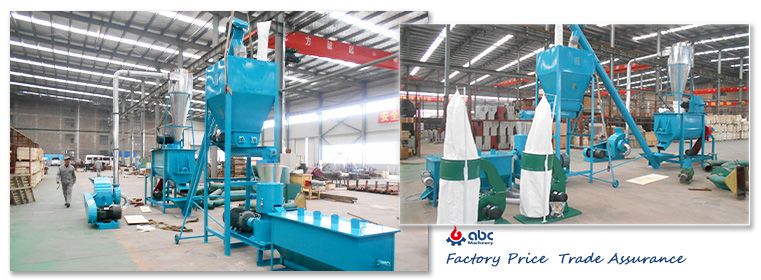
Chicken Feed Pellet Mill Plant
Animal feed pellet making machine must be in good condition if you want to achieve high-quality chicken feed pellets. Before starting chicken feed pellet production process, make sure that the ingredient mixer, roller, dies, the position of blades, and hammer for grinding the raw material into the most suitable sized particles are all in good condition, so that you make the most out of these machines. Pellet cooling, crushing, and grinding are also very important processes to produce pellets of good quality. (Related Post: Animal Feed Pellet Mill for Sale >>)
- Steam and Temperature
The right amount of steam before entering the raw material in the conditioner is another important factor one must consider to achieve high-quality chicken feed pellets. To make granulation process success, steam and moisture level must be properly optimized. The temperature should also be optimized based on which source of starch is being used in the process. The most accurate temperature for achieving high quality results is from 80°C to 85°C.
- Pellet Size
The size of pellets of raw materials also influences the quality of raw material. The grinder is used to crush the raw material into fine particles so that pellets of good size and high density are achieved.
| Ingredient | Maize | Soya | Wheat offal | Palm kernel cake | Fish meal | Oyster shell |
|---|---|---|---|---|---|---|
| Chick (kg) | 45 | 34 | 13.10 | - | 3 | - |
| Grower (kg) | 48 | 25 | 08 | 07 | 04 | - |
All these factors must be monitored on a daily basis in order to keep the quality constant. The use of binders must be avoided so that the process remains cost-effective. Other means that can reduce energy consumption and increase high-quality chicken feed pellet production must be used wisely, which is especially needed for those who have poultry feed mill for business purpose.
Whether you want to make chicken feed at home for personal use or launch a chicken feed business with a complete chicken feed production line, ABC Machinery has the right solutions for you. We offer customized chicken feed equipment, competitive chicken feed machine price, and professional support from equipment selection to installation.
Send us your inquiry now to get a free quote for chicken feed pellet machine, customized chicken feed manufacturing process plans, or details about our successful projects in Tanzania, Nigeria, India, and more! Let’s help you save costs, boost efficiency, and grow your poultry business.


